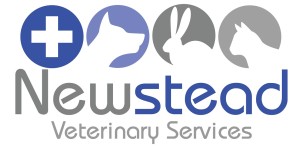The Blue Tick is a national certification programme run by the SPCA that identifies animal food products produced in a manner that is guaranteed to be cruelty-free.
To be eligible to have the SPCA Blue Tick on foods, food producers must meet the SPCA’s rigorous welfare standards and undergo thorough auditing on a regular basis by qualified and independent inspectors. Spot audits can also be done at any time.
The foods first to be accredited under the scheme in 2001, were free range and barn laid eggs and in 2007 free range and eco barn pork and pork products were added. In 2011 standards for meat poultry chicken were added and turkeys with the Blue Tick were launched at the end of 2012. There are now plans to add veal and salmon to the list in 2013.
The SPCA is working hard to convince food producers there are benefits for everyone in producing food from healthy and happy animals. You can make a difference by purchasing SPCA Blue Tick products and by asking for Blue Tick products at the supermarket.
The price difference is generally minor compared to the benefits of better quality food, and the moral satisfaction consumers get from knowing the food is ethically produced. But the fact is it simply costs more to farm animals in open spaces than in cramped production line conditions.
Cage hens are never going to be happy and they suffer enormous emotional and physical distress. They are unable to carry out any of their natural behaviours. They can’t perch or roost, dust-bathe, peck at the ground or make a nest. They can’t even flap their wings, as the space they live in is too small. Over three million egg layer hens live short and cruel lives crammed inside wire cages to produce eggs. Nearly 90 per cent of the one billion eggs consumed in New Zealand are produced by caged hens that spend their entire lives mistreated. Since 1995 the average New Zealander has increased their egg consumption by three-dozen eggs per year totaling a whopping 230 eggs per person, per year – the majority of which are cage eggs!
Barn eggs with the Blue Tick are laid by hens that are free to move around indoors. They are able to walk and flap their wings. They have deep litter in which to scratch and dust-bathe, and there are easily accessible feed and water stations placed throughout the shed. Above the litter is a central raised platform where the hens roost at night. Nesting boxes are placed above the platform, where the hens can lay their eggs in comfort and privacy. A well-managed barn can be just as welfare friendly for a hen as a proper free-range facility.
If you buy free range eggs that don’t have the Blue Tick, you need to be aware what ‘free-range’ actually means – a flock of chickens foraging outside with plenty of space to roam – this however is not a law in New Zealand. In fact, the legal requirements are very vague. The result? Not all free-range eggs are created equal.
Because there isn’t a minimum outdoor area set down in law, a large flock housed primarily in a barn could be given access to a small yard – and still legally be ‘free-range’. There’s also no requirement for how often chickens are given access to the outdoors, or how much shade and shelter is provided. One farmer estimates that 70 percent of ‘free-range’ eggs in New Zealand have never seen the light of day. The SPCA Blue Tick guarantees that these animals have been raised in a cruelty-free manner. For the Blue Tick to be placed on free range eggs, they must be laid by hens that are free during the day (at least 8 hours) to range outdoors in paddocks, where they have plenty of room to forage, dust-bathe, stretch and flap their wings, and perform their natural behaviours. They have an indoor area in which to shelter, feed and roost at night, and nesting boxes in which to lay their eggs in privacy. They are also kept in small flocks.
If you eat pork, it can be difficult to find out which country your pork product originates from or the welfare standards by which the pig was raised and slaughtered. Pork products with the Blue Tick use no sow crates, farrowing crates or concrete fattening pens. They are kept only in open fields and/or deep straw shelters. No chemicals are added to the feed and no hormones are given.

The Blue Tick logo offers consumers a guarantee that the product they are choosing has been farmed humanely and it also gives producers the recognition they deserve for farming the ‘right’ way.

No comments yet.